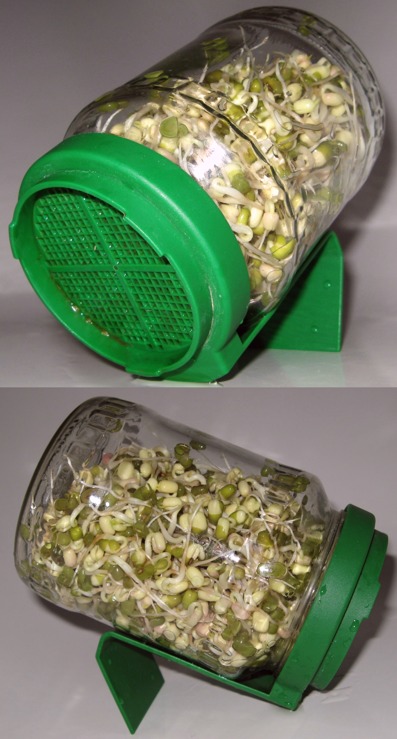Blog: Do it yourself sprouting takes little effort and low cost

Food Smarts
with Jade Eckardt
Growing fresh food usually requires, dirt, space, time, and a little elbow grease. But sprouting can take place almost anywhere in your home, requiring little effort and a very low cost.
There is a wide variety of seeds to sprout. From wheat, to broccoli, to pumpkin, and sunflower seeds, they all have different size sprouts, and a variety of uses, flavors, and nutrients.
Some common sprouts that are found on store shelves are alfalfa, clover, lentils, and sunflower.
Alfalfas are filled with vitamin C, vitamin K, riboflavin, folate, magnesium, phospohorus, zinc, copper and manganese.
Lentils are a great source of vitamin C, folate, and manganese and high in protein and fiber. Clover sprouts are known to have cancer fighting properties, as well as vitamins A, B, C, E, and calcium, magnesium, iron, and zinc. Clovers are also very high in protein.
My personal favorite are mung bean sprouts. Often described as plump, white, and crisp, the mung bean can be used in salads and Asian dishes and is known as the world’s most used sprout. The little oval shaped bean is a good source of fiber, vitamins C and K, riboflavin, folate, copper, and manganese.
Organic mung beans can be found in health food stores and non-organic can usually be found in the Asian food section of most supermarkets. They’re really affordable too, only around $1 per pound.
While seeds and beans are dried, they are preserving their nutrients and ability to turn into food. When they are soaked, they become alive and their nutrients become available and activated.
So, to get on with the sprouting you will need:
* One quart size mason jar, the kind with the separate inner piece from the round screw piece
* Square of screen to fit the top of the jar
* Your favorite type of seeds or beans
* Water
1. Put 1/4 cup of beans or seeds in the jar.
2. Fill about half way with water. The general rule is 1 part seeds, 2 parts water.
3. Soak over night.
4. In the morning, drain water, rinse, secure the screen under the outside part of the top.
5. Turn jar on side and wait for beans sprout.
6. Store seeds in an airtight container in the fridge. Many can last for several weeks.
Most will take about two or three days, and how sprouted you want them is a personal choice and varies between variety. For instance, mung bean sprouts are usually eaten pretty short, while sunflower sprouts grow to about two inches before they are eaten.
Have fun with sprouting and get creative with combinations. Mung and lentil beans spouted together make a good combo, or alfalfa and clover. Happy sprouting!

Alfalfa
35% protein
Vitamins: A, B, C, E, K
Minerals: calcium, magnesium, potassium, iron, zinc
Adzuki
25% protein
Vitamins: A, C, E
All amino acids except tryptophan
Minerals: iron, niacin, calcium
Buckwheat
15% protein
Vitamins: A, C, E
Minerals: calcium
Clover
30% protein
Vitamins: A, B, C, E
Minerals: calcium, magnesium, potassium, iron, zinc
Fenugreek
30% protein
Vitamins: A
Minerals: iron, niacin, calcium
Garbonzo
20% protein
Vitamins: A, C, E
Minerals: iron, calcium, magnesium
Lentil
25% protein
Vitamins: A, B, C, E
Minerals: iron, calcium, phosporus
Mung Bean
20% protein
Vitamins: A, C, E
Minerals: iron, potassium
Pea
20% protein
Vitamins: A, B, C
Minerals: All essential
Radish
Vitamins: C
Minerals: potassium
Sunflower
Complex amino acids
Minerals: calcium, iron, phosphorus, potassium, magnesium
Sprout nutrition list from Sproutpeople.com.